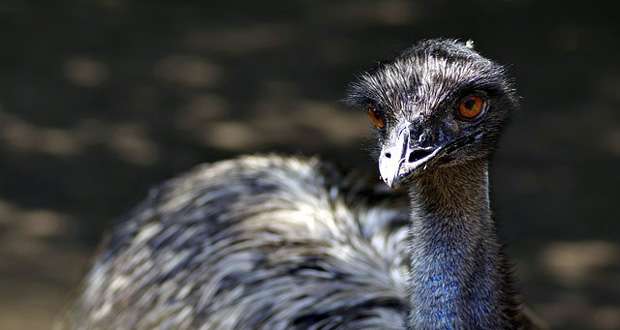In a Nutshell
During 1932 in Australia, military troops were deployed to fight a war on the giant Emu bird. Shortly after WWI, soldiers had returned to their farms and were struggling to make ends meet. To make things worse, a migratory mob of Emus descended on the farms, eating crops and breaking fences. After petitioning the government, soldiers armed with trucks and machine guns were sent to cull the birds. Media outcry turned to mocking amusement when the soldiers barely managed to kill any of the giant birds. Over the course of one month, only 986 out of some 20,000 Emu were killed. The operation was deemed a failure – the Emus had won the war.
The Whole Bushel
Back in 1932, the Australian economy was struggling through the great depression. The price of wheat was plummeting and farmers struggled to make ends meet. Then the Emus invaded. Every year, the birds follow migratory patterns that lead them to the farmer’s plush lands. The birds were a force to be reckoned with – eating crops and destroying fences, they devastated farmlands. The farmers sent a delegation of ex-soldiers to petition the Minister of Defense for machine guns to defeat the birds. The minister agreed and sent a group of soldiers, stating that the birds would make ‘good target practice’.
The ‘war’ was set to begin in October 1932 under the command of Major G.P.W Meredith of the Seventh Heavy Battery. Meredith was accompanied by two soldiers, two Lewis guns and 10,000 rounds of ammunition. Their target was to collect 100 Emu skins with the farmer’s help. Off to a bad start, they were delayed by a month by heavy rains that scattered the Emu. Their first encounter was with a group of some 50 Emu, which farmers tried to herd into an ambush. Unsuccessful in their plan, the Emus split up into small groups and ran from the guns, quickly going out of range and only taking a few casualties.

On November 4th, the soldiers lay in ambush near a local dam waiting for over 1000 Emus to arrive. Only opening fire after the birds got close, they killed 12 before the gun jammed. Frustrated by his lack of success, Meredith changed tactics. He moved to the South where the birds were reported to be tamer. His efforts were in vain as these birds seemed to be employing guerrilla tactics. The army observers noted that “each pack seems to have its own leader now – a big black-plumed bird which stands fully six feet high and keeps watch while his mates carry out their work of destruction and warn them of our approach”. Grasping at straws, the army Major mounted the guns to the truck and tried to outpace the Emus. An adult Emu can run at speeds of 50 km/hr with surprising agility, and the trucks could not keep up. The military withdrew its forces and returned a few days later with a more effective plan. In total, they killed 986 Emu with 9860 rounds of ammunition for a kill rate of just 10%.
Amidst conservationist outcry, the Australian government ceased the operation. The destructive birds had won the war. A bounty system was put in place and proved to be more effective at culling the birds. These days, exclusion fences are the most common way of protecting farmlands from the Emu force.
Show Me the Proof
“EMU WAR” DEFENDED [Link1] [Link2]












